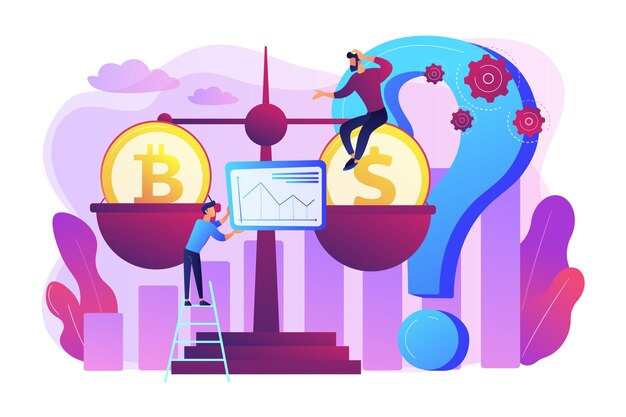Surprising and Informative Bitcoin Facts That Many People Don’t Know About
Engaging with this form of currency involves awareness of its transaction limits. A network can only handle approximately 7 transactions per second, significantly less than traditional payment systems like Visa, which processes thousands per second. This limitation raises questions about scalability and future improvements.
Examine the creation timeline; the original software was released in 2009, and the mysterious creator remains anonymous. This anonymity has led to widespread speculation and intrigue surrounding the project’s inception, with various theories regarding its creator’s identity.
The distribution of ownership showcases a fascinating trend. Research indicates that a small percentage of accounts control a substantial portion of the total supply, potentially affecting market dynamics and price stability. This concentration can lead to volatility, as large transactions by these accounts may impact broader trends.
Another noteworthy aspect is the environmental concern surrounding mining operations. Estimates suggest that the energy consumption per transaction is comparable to that of entire countries, raising sustainability questions in the context of environmental regulations and climate initiatives.
Engage with robust communities and forums to discover the intricate details of this currency’s ecosystem. Enthusiasts and stakeholders frequently share insights and analyses that reveal emerging trends and market movements, helping individuals stay informed and make educated decisions.
The Mysterious Identity of Bitcoin’s Creator
The identity of the individual or group behind the pseudonym Satoshi Nakamoto remains one of the greatest mysteries in finance and technology. Despite numerous investigations, the true creator has never been definitively identified. Several theories exist, naming various candidates including computer scientists, cryptographers, and even government agencies. However, no substantive evidence has emerged to support any claim conclusively.
Theories and Candidates
Among the most discussed names are Nick Szabo, a cryptographer known for his work on “bit gold,” and Hal Finney, an early Bitcoin contributor. Additionally, some speculate that Satoshi may be a collective rather than an individual, pointing to the sophistication of the code and knowledge reflected in the original white paper. Each hypothesis presents compelling arguments, yet they all fall short without confirmation.
The Impact of Anonymity
The creator’s anonymity has fueled intrigue and speculation, contributing to Bitcoin’s appeal. The absence of a central authority allows for a decentralized approach, aligning with the principles of liberty and privacy. This mystery has cultivated a culture within the community that both reveres and questions the origins of this revolutionary technology.
Bitcoin’s Early Days: When Pizza Cost Millions
On May 22, 2010, a programmer named Laszlo Hanyecz made history by purchasing two pizzas for 10,000 units of cryptocurrency, marking the first real-world transaction using this asset.
At the time, the value of this digital currency was negligible, but as its price skyrocketed in the following years, the cost of those pizzas became astronomical.
Here are some noteworthy details surrounding this iconic purchase:
- The total value of the pizzas, based on current prices, amounts to several million dollars.
- The transaction was facilitated on a forum, showcasing the community’s early enthusiasm for this currency.
- Laszlo’s purchase exemplifies the potential of everyday items being acquired with this innovation.
This event emphasizes the speculative nature of this asset and how perceptions of value have dramatically shifted over time.
In hindsight, Hanyecz’s spending highlights the wild volatility and the unpredictable trajectory of its worth. Many investors reference this moment as a benchmark for understanding the evolution of digital assets as investment tools.
Energy Consumption: Bitcoin vs Traditional Banking
Quantifying energy usage reveals striking comparisons. The global banking sector is estimated to consume approximately 263 terawatt-hours (TWh) annually. This encompasses the energy spent on data centers, ATMs, branches, and transactions.
On the contrary, the protocol’s energy expenditure sits around 90 TWh per year. This aligns with the energy used by countries like the Netherlands. The mining process, essential for transaction verification, demands substantial computational power, but innovations in renewable energy sources increasingly power these operations.
Consider the energy-to-transaction ratio. Traditional banking processes roughly 1.5 billion transactions daily, resulting in an average cost of 0.17 kWh per transaction. In comparison, the alternative system averages 0.0009 kWh per transaction, demonstrating a notable efficiency advantage despite its higher overall energy demand.
For financial institutions, a shift towards sustainable practices is underway, with many investing in renewable solutions. Support for sustainable mining operations can enhance the alternative system’s carbon footprint. Advocating for greener practices within both sectors may yield considerable environmental benefits.
Stakeholders should prioritize transparency in energy consumption metrics for informed decision-making. Continued research into optimizing operational efficiency will benefit both systems. Engaging in discourse around these topics facilitates a more sustainable future for the financial environment.
The Role of Bitcoin in Curbing Inflation
Utilizing cryptocurrencies can provide a hedge against rising prices in traditional financial systems. The fixed supply of a leading cryptocurrency, capped at 21 million coins, creates scarcity, contrasting with fiat currencies that central banks can print without limitation.
Historical Data: In countries experiencing hyperinflation, like Zimbabwe and Venezuela, citizens have turned to cryptocurrencies as a store of value. During such crises, the purchasing power of local currencies diminishes rapidly; many have sought refuge in assets with limited supply.
Investment Trend: Investors view this currency as a safe haven, especially during economic downturns. Over recent years, a notable increase in institutional investment has occurred, indicating confidence in its potential as an inflation-resistant asset class.
Transaction Speed and Cost: Blockchain technology allows for fast transaction processing and lower fees compared to traditional banking systems, especially in cross-border payments. This efficiency makes it appealing for consumers looking to mitigate the effects of inflation.
Global Adoption: Various nations are integrating cryptocurrencies into their financial ecosystems. As more businesses accept this currency, its legitimacy grows, creating a more stable environment for asset holders.
Continuous education on market trends and analysis is vital for investors considering this asset as a tool against inflation. Tracking regulatory developments and market dynamics will also be key in forming sound investment strategies in this evolving sector.
Lost Bitcoins: The Treasure That Might Never Be Found
Approximately 20% of the existing supply is considered lost, with estimates suggesting over 3 million coins are trapped in inaccessible wallets. Many holders have lost private keys and, consequently, access to their investments. These locked assets have led some to label them as the “greatest treasure” of the cryptocurrency world.
Several high-profile cases highlight this situation, including a programmer who mistakenly discarded a hard drive containing 8,000 coins, now worth hundreds of millions of dollars. Reports indicate that countless other individuals have faced similar fates, resulting in entire fortunes vanishing into oblivion.
Strategies to avoid such losses include implementing secure password management practices and employing hardware wallets for safe storage. Regularly backing up wallet data and ensuring private keys remain protected are additional steps to safeguard assets.
The potential value of these unclaimed assets leads some to speculate on the long-term impacts on market supply. As lost assets cannot circulate, the effective circulating supply remains significantly lower than the total mined coins. This scenario could influence price dynamics and investor behavior.
Some researchers estimate that a significant amount of these inaccessible coins may never resurface, potentially increasing the value of the remaining units in circulation. This phenomenon creates a curious market condition, amplifying interest for both investors and analysts.
Bitcoin’s Impact on Global Remittances
Utilizing cryptocurrency for remittances can significantly reduce fees compared to traditional methods. Average charges for sending money internationally via banks and services like Western Union often reach up to 7%. In contrast, transactions using crypto can lower fees to around 1% or less, making it economically advantageous for migrants sending funds back home.
Speed of Transactions
Cryptocurrency transactions can be executed within minutes, whereas conventional remittance methods may take several days to process. For instance, while a bank transfer can take 3 to 5 business days, transferring assets via a crypto exchange enables recipients to access funds almost instantly, enhancing the reliability of financial support in urgent situations.
Access to Financial Services
Many individuals in developing nations lack access to banking infrastructure. Cryptocurrencies provide an alternative, allowing users to send and receive money without needing a conventional bank account. This dynamic empowers people to partake in the global economy, facilitating financial inclusion for the unbanked population.
Integrating cryptocurrency in remittance services not only offers lower fees and faster transaction times but also broadens access, impacting millions of individuals relying on these funds for everyday survival.
Q&A: Surprising Facts about Bitcoin
What should users know about bitcoin mining and the creation of new bitcoins up to the year 2140?
Bitcoin mining is the process through which new bitcoins are created and transactions are verified on the bitcoin network. Miners use specialized hardware to solve cryptographic puzzles, and in return, they receive a reward in BTC. This process is designed to continue until the year 2140, when the maximum supply of 21 million bitcoins will be reached. After that, miners will earn revenue solely from transaction fees on the bitcoin blockchain.
How did the first bitcoin transaction lead to the creation of Bitcoin Pizza Day, and why is it significant in the world of bitcoin?
Bitcoin Pizza Day commemorates the first known transaction using bitcoin for a physical good—two Papa John’s pizzas bought for 10,000 BTC in 2010. This event marked the beginning of real-world use of bitcoin and is now celebrated annually by the bitcoin community. The price of bitcoin at the time was just a few cents, making this a powerful reminder of how far the value of bitcoin has come.
What role does a bitcoin wallet play in the use of bitcoin, and how does it support the peer-to-peer nature of the network?
A bitcoin wallet is essential for anyone who wants to buy bitcoin, receive BTC, or make a bitcoin transaction. It stores the cryptographic keys that give users access to their funds and allows them to send and receive bitcoin without relying on intermediaries. This aligns with bitcoin’s original purpose as a decentralized digital currency built on a peer-to-peer network, where users can transact directly without centralized control.
Why is the price of bitcoin considered volatile, and how has it changed between 2021 and 2024?
The price of bitcoin is known for its volatility due to market speculation, regulatory developments, macroeconomic trends, and investor sentiment. Between 2021 and 2024, the price of bitcoin has experienced sharp fluctuations, attracting both risk-tolerant investors and skeptics. Despite this volatility, the bitcoin ecosystem has continued to grow, with more users of bitcoin, increasing adoption of bitcoin ETFs, and broader use of bitcoin and other cryptocurrencies in mainstream finance.
How much is one bitcoin worth today compared to when bitcoin was created in 2009, and what causes this price volatility?
When bitcoin was created in 2009 by the pseudonymous creator of bitcoin, it had no real market price. Over time, as adoption grew, the bitcoin price surged, reaching tens of thousands of dollars in the following decade. This price volatility is influenced by factors like supply and demand, investor sentiment, regulation, and macroeconomic events. Bitcoin investors closely monitor these fluctuations, as even a small portion of bitcoin can be worth a significant amount.
What is the total supply of bitcoin, and how many bitcoin are currently in existence?
The supply of bitcoin is capped at 21 million bitcoin, as defined in the original bitcoin whitepaper. As of now, over 19 million bitcoin have been mined, leaving fewer than 2 million yet to be created. The number of bitcoins is fixed, and mining bitcoins will continue until the last bitcoin is mined, expected around the year 2140. This limited supply contributes to the long-term value and scarcity appeal of bitcoin as an asset.
Who is the creator of bitcoin, and what do we know about the bitcoin founder today?
The creator of bitcoin is known as Satoshi Nakamoto, a pseudonymous figure who published the bitcoin white paper in 2008 and launched the network in 2009. Despite many theories, the true identity of the bitcoin founder remains unknown. Satoshi mined the first bitcoins and maintained early communication with developers before disappearing from public view. Their contribution to the world of cryptocurrency continues to influence discussions around decentralization and financial sovereignty.
How did the “two papa” pizza purchase contribute to the rise of bitcoin, and what does it mean to bitcoin holders today?
The “two papa” pizza purchase, known as Bitcoin Pizza Day, involved a payment of 10,000 BTC for two pizzas in 2010. At the time, the worth of bitcoin was negligible, but today that amount would be valued in the hundreds of millions. This event symbolized the first real-world use of bitcoin and is a key milestone remembered by bitcoin holders, highlighting the potential of bitcoin to evolve from an experiment to a globally recognized decentralized currency.
What role does the ledger play in tracking the amount of bitcoin and ensuring transparency across the network?
The ledger in the bitcoin network, known as the blockchain, records every transaction ever made and tracks the amount of bitcoin held in each wallet. This public ledger ensures transparency and prevents double-spending, making it possible to verify how many bitcoins are in existence. Since bitcoin was the first decentralized digital currency, its ledger remains one of the most important innovations in maintaining trust and accuracy in a system without central authority.
How does bitcoin cash differ from bitcoin, and why do some former bitcoin supporters choose to invest in it?
Bitcoin cash was created as a fork of bitcoin to address concerns about transaction speed and scalability. While it shares the same origin as bitcoin, it allows for larger block sizes, enabling faster transactions with lower fees. Some former bitcoin advocates who prioritize daily usability and microtransactions prefer bitcoin cash for its practicality. However, many still continue investing in bitcoin for its broader adoption, stronger security, and reputation as the largest bitcoin-based asset by market cap.



